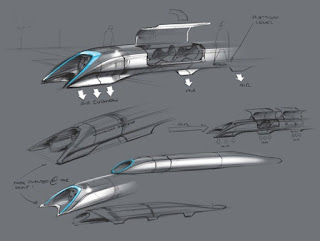Internet of DNA
Breakthrough Technical standards that let DNA databases communicate.
Why It Matters Your medical treatment could benefit from the experiences of millions of others.
Key Players Global Alliance for Genomics and Health
Google
Personal Genome Project
A match could make a difference. Noah is developmentally delayed, uses a walker, speaks only a few words. And he’s getting sicker. MRIs show that his cerebellum is shrinking. His DNA was analyzed by medical geneticists at the Children’s Hospital of Eastern Ontario. Somewhere in the millions of As, Gs, Cs, and Ts is a misspelling, and maybe the clue to a treatment. But unless they find a second child with the same symptoms, and a similar DNA error, his doctors can’t zero in on which mistake in Noah’s genes is the crucial one.
Drone meets blimp for crowd-friendly UAV
A new breed of unmanned aerial vehicle that is safe to fly at close proximity to crowds has been developed by a spin-off team from Swiss university ETH Zurich. The helium-filled flying machine, known as Skye, combines the manoeuvrability of a traditional quadcopter with the energy efficiency of a blimp.
The makers say their safe and ‘friendly’ drone offers a new and innovative way for brands to interact with their audiences in public settings. Where current advertising is often limited to displays and billboards, Skye can float safely around and interact with people.
“It’s a unique flying machine which is safe enough to interact with. So you can touch it in flight; it’s basically filled with helium which provides most of the uplift,” said Daniel Meier, co-founder of company Aerotain which developed the Skye drone.
Despite being around three metres (approx. 10 ft) in diameter, Skye is extremely agile and able to perform almost any movement instantaneously thanks to its four small electric motors. Its engineers designed algorithms that keep it on course, even when performing a range of aerial tricks.
“This is where the magic happens; four motors are allowing it to perform any movement, so you can really move it in the air like a flying eye,” Meier told Reuters while demonstrating Skye’s operation. “There is a computer on board which knows exactly how it’s orientated in the world, and then it gives commands to the motors to actually align it to where you want it to be. And there are four motors on it which can rotate around their axis and with them you can precisely control it in any environment, basically.”
Skye is lightweight, which combined with its small energy requirements, give it a flight time of about two hours on a single charge.
advertisement
Download
By eliminating exposed rotor blades typical of most drones, Skye makes it possible to operate around crowds without fear of injury.
Meier added that regular drones could also be dangerous if they malfunction. “There is even one bigger issue; that is if the electronics fail it will just fall down to the ground. This can’t happen with Skye because helium is providing the buoyancy, so if ever something goes wrong it becomes a huge balloon and people could play with it,” he said.
Aerotain says its technology could disrupt the advertising industry by allowing companies to engage directly with the public in a way never seen before. At public events, such as a sports game or concert, Skye can autonomously float above the crowds or with a pilot at the controls. Skye’s surface can be designed individually, for instance to depict a product or to show the name of a brand, with its uniqueness naturally attracting people’s attention. It’s also strong enough to carry on-board cameras for live streaming and aerial cinematography.
Skye is currently on display in the Swiss Pavilion at the CeBIT 2016 technology fair in Hanover, Germany.
Source"https://www.technologyreview.com/s/535016/internet-of-dna/" and "http://newsdaily.com/2016/03/drone-meets-blimp-for-crowd-friendly/"




